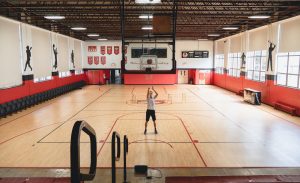As more homeowners, designers, and builders turn their attention to sustainable living and environmental responsibility, reclaimed wood flooring has emerged as a favored choice. Beyond its striking aesthetic, reclaimed wood embodies a unique blend of history, character, and eco-friendliness, giving new life to timeworn materials. While there are general considerations for any wood flooring selection and installation, reclaimed wood presents specific factors to keep in mind.
The term “reclaimed wood” can be somewhat ambiguous in the wood products industry, encompassing a variety of sources. To truly qualify as reclaimed, wood must be salvaged from a previous use that is no longer viable. Common sources for reclaimed wood include warehouses, barns, factories, houses, water towers, and bridges, among others. Some suppliers also label wood from pre-consumer scraps at sawmills or logs salvaged from flooded areas as reclaimed. While these alternatives are more sustainable than using newly harvested wood, they should not be classified as truly reclaimed.
History, Patina, and Character
One of the main draws of reclaimed wood is its rich history and distinct character. Knowing the origins of the material can enhance the sentimental value and aesthetic appeal of a space. The source significantly influences the wood’s physical appearance; its color and texture can vary widely depending on its past. Over time, wood develops a unique patina, affected by factors such as geographic location and exposure to ultraviolet light, humidity, and temperature.
In addition to its patina, the individuality of reclaimed wood is amplified by its surface texture and natural imperfections. Features like saw marks, nail holes, oxidation, stains, knots, and cracks tell the story of the wood’s previous life. A high level of character typically lends itself to a more rustic appearance, and the presence of these marks can impact both the look and functionality of the flooring. Understanding how suppliers grade and classify these imperfections is essential for setting accurate expectations for the finished product. It’s important to review physical samples and product images to gauge the character and aesthetics of reclaimed wood flooring.
Surface textures, such as those from band saws, circular saws, or hand-hewing, contribute to a rustic look. While a rougher surface can help hide additional wear and tear—making it ideal for high-traffic areas or softer wood species—such textures can complicate cleaning and may require refinishing sooner than smoother surfaces.
Installation Considerations
Most installation considerations for reclaimed wood are similar to those for standard wood floors. It’s crucial to acclimatize the wood to its environment before installation. Given the aesthetic variability among reclaimed wood planks, it’s wise to order a bit more material to allow for on-site selection and grading. While a typical overage for new wood flooring is about five to ten percent, consider adding an extra five percent for reclaimed wood.
Another important decision is whether to choose prefinished flooring or unfinished wood that will be finished on-site. Prefinished flooring can be more cost-effective and lead to quicker installation, but site finishing has distinct advantages for reclaimed wood. This approach offers greater flexibility in choosing custom colors and sheens, as well as allowing users to control how much texture and character is preserved and how any voids in the planks are addressed.
The level of sanding performed on-site will influence how much texture remains on the floor. Customizing the sanding and finishing process allows for achieving the desired texture and character for a particular space.
Addressing voids in flooring planks varies by supplier. With on-site finishing, installers can either remove voids by cutting them out or fill them with wood filler or epoxy—a process that can be much more difficult, if not impossible, with prefinished flooring.
Engineered Products
Reclaimed wood flooring can also be found in a layered, engineered construction. While the entire thickness may not be reclaimed, this approach offers several advantages. Like standard engineered flooring, the layered design addresses stability issues, allowing reclaimed wood to be installed in various spaces, including floating floor systems. Filling voids is generally easier with engineered products, whether during manufacturing or on-site finishing.
Choosing reclaimed wood flooring is not just a design decision; it’s a commitment to sustainability and a celebration of the rich stories embedded in each plank. By balancing character and functionality, consumers can engage with their living spaces on a deeper level, perpetuating the narrative of the materials they choose.




